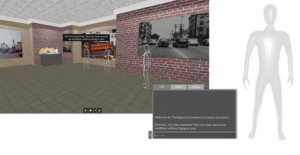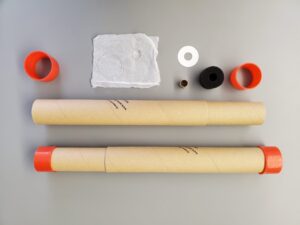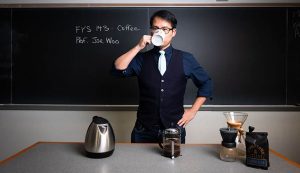Faculty members continue developing robust plans for remote courses
By Shannon Sigafoos
Following a spring semester in which COVID-19 caused courses designed for the classroom to be reinvented on the fly, Lafayette professors across all disciplines have spent the summer rethinking and redesigning their syllabi so that they continue to offer the engaging style of education the College is known for.
Although recent resurgence of the virus has forced the College to forgo fully reopening campus and to continue remote instruction through the fall semester, some faculty members have been preparing for that eventuality and are facing it with increased confidence and renewed energy.
“We all recognized that there was a very strong likelihood that we were going to have to shift. So, it was just wise in terms of planning our time—but also making sure our courses are rigorous, robust, and student-centered—to have contingency plans,” shares Ryan Mitchell, assistant professor of English. “The Center for the Integration of Teaching, Learning, and Scholarship (CITLS) and the Lehigh Valley Association of Independent Colleges (LVAIC) have been providing really powerful and useful guides for those of us who are concerned about building community [remotely].”
Like many of his colleagues, Mitchell had been preparing for HyFlex (hybrid-flexible) courses that allow students to choose whether they want to attend classes online or in person. Now, using a range of resources offered through the summer by the CITLS staff, faculty have been rethinking their goals and honing their online teaching skills with a variety of instructional tools—as well as researching new programs and technologies that would most benefit their students.
“I’ve just discovered a new online program, Artsteps, which I will use to host the student-created digital exhibition for my course on Race and Material Culture in Early Modern Europe,” shares Louisa Foroughi, assistant professor of history. “Artsteps allows you to create a 3D virtual gallery space, complete with captions and a guided tour. As part of this guided tour, we will upload audio from students’ presentations on their chosen artifact or image, so that they will be able to share both of the public history aspects of our final project with a broad audience. I’m really excited about this discovery, as Artsteps is perfectly suited to showcasing students’ research in a more dynamic way.”

Artsteps is an innovative, simple to use, web-based environment that empowers its members to model exhibitions, existing or not, by designing realistic 3-dimensional room complexes. Professor Louisa Foroughi will utilize Artsteps in her course “Race and Material Culture in Early Modern Europe.” (Photo courtesy of Artsteps)
Technology, however, is just one key to moving forward toward a successful semester. Students, faculty, administration, and staff continue to rise to meet a complex set of challenges—including assessing the impact of teaching and learning from an anti-racist and anti-oppressive perspective.
Reflecting on social justice in a socially distant world
Much has happened in the world since higher education moved to remote teaching and learning this past March. With the College community adjusting to rules and regulations made necessary by COVID-19, it became more important than ever to give students the time and space to speak up and articulate their thoughts, feelings, needs, and understandings. And while online classrooms can make it more difficult for educators to “read the room” for cues such as hand-raising or confused looks, faculty are aware that their classes, as gathering spaces for their students, should be a place where those students can authentically explore conversation around race and social justice.
“This is a period of extreme social transformation. In my classes, we study representations of post-WWII Holocaust material and post-catastrophic scenarios related to trauma and testimony, so there hopefully will be concepts and materials that can help students articulate some of these concerns,” says Dennis Johannssen, assistant professor of German. “We’re excited to resume teaching, but it’s important to keep an eye on the fact that this is an exceptional situation and be open to change, to listen to students, and to respond to their needs. It will definitely shape the learning experience this semester.”
“We need time to check in with each other and see how we’re doing,” echoes assistant professor of psychology Susan Hannan, whose research has focused on interpersonal trauma. “We’re trying to create a cohesive, collective environment, and we need to be actively aware of how to give students the space to share and to implement that.”
“I’ll be teaching World Religions and East Asian Religious Customs, and I think the pandemic affords me a special opportunity to illustrate the permeating and persisting influences exerted by religious traditions on our modern cultural and social life. By introducing people’s different (sometimes even opposite) reactions and opinions to the Covid-19, we will be able to encourage students to revisit the role of religious notions and practices in shaping our experience and expressions of global issues,” shares Xu Ma, professor of religious studies. “It’s rewarding to integrate discussions about what’s happening in the world nowadays, and the effects, into our courses on traditions.”
Maximizing creativity for ‘hands-on’ learning
Tea. Maple syrup. Honey. Hot sauce. Drop by drop, professor of chemical and biomolecular engineering Polly Piergiovanni creates colorful edibles by mixing the aforementioned liquid food products with sodium alginate and dripping it into a bath of calcium chloride solution. The only problem? The course is usually taught in a hands-on, interdisciplinary project space—which is difficult to replicate in a virtual setting. After giving it some thought over the summer, Piergiovanni came up with a solution.
“I created individual boxes of supplies for each student,” she explains. “I prepared a personal kit for 40 students that contained all of the supplies they will need to take the course including pre-measured ingredients. Each kit contains about 20 different items. I’ve measured out 800 tiny containers, made 80 foams, and had films drying in the sun in my backyard. My house was filled with boxes and boxes of supplies until we delivered them to Acopian [Engineering Center] for storage before shipping to each student.”

Professor Stephanie Douglas sent these “Project STAR” telescopes to her lab students. This photo shows the kit both assembled and broken down into components.
Students taking astronomy courses with Stephanie Douglas, assistant professor of physics, also can expect packages that will complement their fall coursework to arrive at their homes. After consulting with her department chair, Douglas packaged cardboard and plastic telescopes that students can build so they can observe the night sky and share their findings with their peers.
“A lot of the discussion in the physics department has been around how to manage the Intro to Physics lab, and I’ve gotten a lot of advice from people that I can apply to my lab and that could lead to different ways of getting students to be engaged during the synchronous sessions,” says Douglas. “There’s also a lot of professional development I’ve been a part of that has focused on really interactive activities.”

Professor Joe Woo’s ES101 course will ask students to rate the flavor and aroma of coffee samples that they will receive from Woo. The study will focus on home use/instant coffees.
There’s a good chance that one of the things students will need the most—whether they’re on campus or off—is a daily dose of caffeine to keep going. Joe Woo, assistant professor of chemical and biomolecular engineering, plans to teach his ES101 course, “Coffee,” by sending coffee directly to participants at home. The students will then rate flavor and aroma qualities on a scale from 1-10 and upload their ratings on a poll using Google Forms.
“I selected two major brand name companies that have specialized focus on home use/instant coffees (e.g. Folgers/Maxwell House/Chock Full o’Nuts/Sanka/Nescafé) to minimize sampling biases that may arise from being reminded of a specific flavor or aroma that one of the major chain coffee stores may evoke,” explains Woo. “I have also selected one imported, premium instant coffee that is nearly five times more expensive than the cheaper of the two store brands. Will they be able to sniff out which is the highest quality brand? Will quality and perception of what tastes good match up? I’m looking forward to seeing how it all shakes out.”

Professor Joe Woo was photographed in 2018 for a story about his FYS course on coffee.



